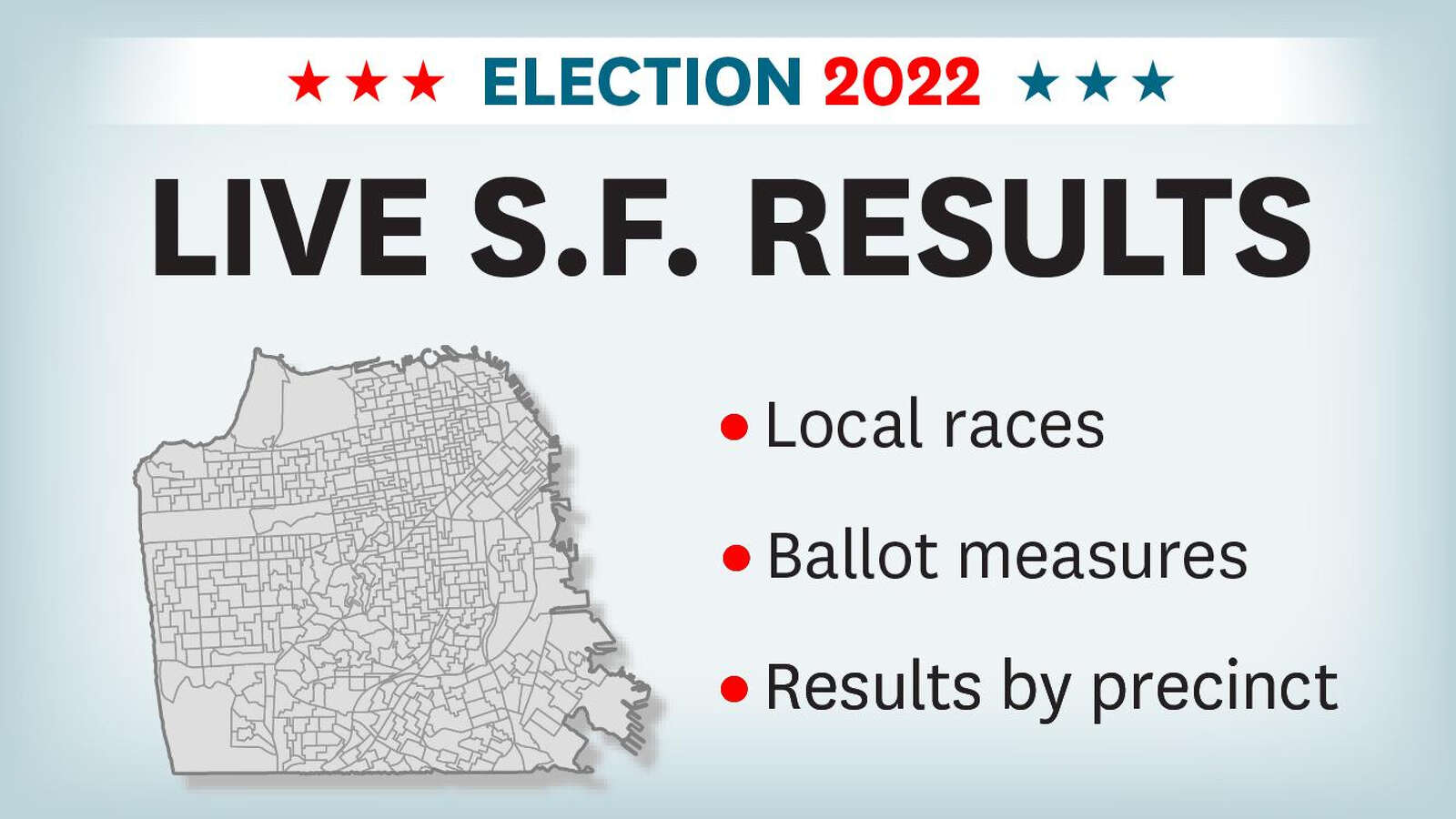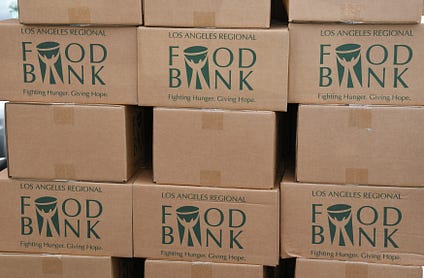California leads the nation in this poverty measure — and S.F.’s is even higher – San Francisco Chronicle

Report on Poverty Rates in California and Alignment with Sustainable Development Goals
Introduction: Challenges to Achieving SDG 1 (No Poverty)
Recent data from the U.S. Census Bureau indicates a significant setback for California in its progress toward Sustainable Development Goal 1 (No Poverty). The state’s poverty rate, as measured by the Supplemental Poverty Measure (SPM), has not only increased for the first time in over a decade but is now the highest in the United States. This report analyzes the key statistics, underlying causes, and policy implications, framing them within the context of the 2030 Agenda for Sustainable Development.
Key Findings: Poverty Metrics and Regional Disparities
The failure to eradicate poverty (SDG 1) and reduce inequality (SDG 10) is evident in the latest statistics. The Supplemental Poverty Measure, which accounts for geographic cost-of-living differences, provides a more accurate picture of economic hardship than the Official Poverty Measure.
- State-Level Poverty: From 2022 to 2024, an average of 18% of Californians, equating to nearly 7 million people, lived in poverty according to the SPM. This rate is the highest in the nation.
- Metropolitan Disparities: Major urban centers exhibit even more acute challenges to achieving inclusive and sustainable communities (SDG 11).
- City of San Francisco: Poverty rate of approximately 20% in 2023.
- Los Angeles County: The highest rate among large counties at 25%.
- Measurement Inconsistencies: A significant gap exists between the SPM rate (18%) and the Official Poverty Measure rate (11%) for California. This discrepancy highlights how national poverty standards fail to capture the economic realities in high-cost states, potentially hindering targeted interventions necessary for SDG 1.
Primary Causal Factor: The Housing Crisis and SDG 11
The primary impediment to poverty reduction in California is the high cost of housing, a direct challenge to SDG 11 (Sustainable Cities and Communities), which calls for access to adequate, safe, and affordable housing for all.
- The SPM methodology explicitly incorporates regional housing costs, which is the main reason for California’s high ranking.
- High housing costs effectively negate wage gains, trapping families in poverty despite being employed, undermining progress on SDG 8 (Decent Work and Economic Growth).
- The economic pressure from housing costs may be displacing low-income populations from urban centers, further exacerbating inequalities (SDG 10) and undermining the goal of inclusive communities.
Impact of Social Safety Nets and Policy Reversals
The role of social protection systems is critical for achieving the SDGs. Recent trends demonstrate both the effectiveness of robust safety nets and the severe consequences of their withdrawal.
Pandemic-Era Progress and Subsequent Regression
A temporary reduction in poverty post-2020 was observed, largely attributed to enhanced social spending programs that align with SDG targets.
- Effective Interventions: Stimulus checks, expanded child tax credits, and increased funding for the Supplemental Nutritional Assistance Program (SNAP), known as CalFresh in California, successfully lifted many families out of poverty.
- Policy Reversal: The expiration of these pandemic-era provisions has led to a reversal of these gains, returning poverty rates to pre-pandemic levels. This demonstrates a fragile social safety net inconsistent with long-term commitments to SDG 1 and SDG 2 (Zero Hunger).
Challenges to Food Security (SDG 2)
Reductions in food assistance programs directly threaten progress on SDG 2.
- In 2023, CalFresh prevented an estimated 850,000 Californians from falling into poverty.
- The termination of emergency funding and proposed federal cuts to SNAP could reduce benefits by 25%, increasing food insecurity and pushing more households into poverty.
Conclusion: Policy Imperatives for SDG Attainment
California’s high poverty rate is a multifaceted problem that intersects with several Sustainable Development Goals. Addressing this challenge requires a comprehensive policy approach.
- Address Housing Affordability: Achieving SDG 11 by controlling housing costs is paramount. Without this, efforts to increase wages or social benefits will be insufficient to make meaningful progress on SDG 1.
- Strengthen Social Safety Nets: Policies must be implemented to create a robust and permanent social protection system. This includes re-evaluating eligibility criteria for programs like CalFresh, which often use the outdated Official Poverty Measure, thereby excluding families in high-cost areas who are in genuine need.
- Promote Decent Work and Fair Wages: Efforts to ensure wage growth outpaces inflation are essential for fulfilling SDG 8 and providing a sustainable pathway out of poverty.
Without significant structural changes to address the cost of living, particularly housing, and a renewed commitment to social protection programs, California will continue to fall short of its commitments to the Sustainable Development Goals, particularly the fundamental goal of eradicating poverty.
Analysis of Sustainable Development Goals in the Article
1. Which SDGs are addressed or connected to the issues highlighted in the article?
- SDG 1: No Poverty – The entire article is centered on the issue of poverty in California, discussing its high rates, the factors contributing to it, and the impact of social programs.
- SDG 2: Zero Hunger – The article discusses the role of food assistance programs like the Supplemental Nutritional Assistance Program (SNAP), known as CalFresh in California, and how cuts to these programs could increase the risk of hunger.
- SDG 10: Reduced Inequalities – The article touches upon inequality by highlighting how high living costs disproportionately affect low-income families, how the poverty measure itself can create disparities in aid eligibility, and how wage gains are offset by inflation. It also notes that high costs may be driving the most impoverished people out of certain areas.
- SDG 11: Sustainable Cities and Communities – The article explicitly identifies the “infamously high cost of housing” as the primary driver of California’s high poverty rate, directly linking the issue to the lack of affordable housing in cities like San Francisco and Los Angeles.
2. What specific targets under those SDGs can be identified based on the article’s content?
-
SDG 1: No Poverty
- Target 1.2: “By 2030, reduce at least by half the proportion of men, women and children of all ages living in poverty in all its dimensions according to national definitions.” The article directly addresses this by analyzing California’s poverty rate using a national definition, the Supplemental Poverty Measure (SPM). It discusses the current rate (~18%) and its recent increase.
- Target 1.3: “Implement nationally appropriate social protection systems and measures for all… and by 2030 achieve substantial coverage of the poor and the vulnerable.” The article evaluates the effectiveness of social protection systems like stimulus checks, child tax credits, and CalFresh (SNAP), noting that their expiration has led to a reversal of poverty reduction.
-
SDG 2: Zero Hunger
- Target 2.1: “By 2030, end hunger and ensure access by all people, in particular the poor and people in vulnerable situations… to safe, nutritious and sufficient food all year round.” The article connects to this target by discussing how cuts to food stamps (CalFresh) could “put millions of Californians at risk of hunger” and reduce benefits by 25%, thereby threatening food access for the poor.
-
SDG 10: Reduced Inequalities
- Target 10.4: “Adopt policies, especially fiscal, wage and social protection policies, and progressively achieve greater equality.” The article analyzes the impact of various policies, including pandemic-era fiscal relief (stimulus checks), wage growth struggling against inflation, and social protection programs (CalFresh). It highlights how the design and implementation of these policies affect poverty and inequality.
-
SDG 11: Sustainable Cities and Communities
- Target 11.1: “By 2030, ensure access for all to adequate, safe and affordable housing and basic services…” The article directly relates to this target by stating that “California’s infamously high cost of housing is the main factor behind its high poverty rate.” The discussion of the SPM, which accounts for geographic differences in housing costs, underscores the challenge of affordable housing.
3. Are there any indicators mentioned or implied in the article that can be used to measure progress towards the identified targets?
-
For SDG 1 (No Poverty)
-
Indicator 1.2.1 (Proportion of population living below the national poverty line): The article provides several specific data points for this indicator using the Supplemental Poverty Measure (SPM).
- An average of about 18% of Californians experienced poverty from 2022 to 2024.
- San Francisco’s poverty rate was roughly 20% in 2023.
- Los Angeles County had a poverty rate of 25%.
- The historical rate in California was about 24% in 2014.
-
Indicator 1.3.1 (Proportion of population covered by social protection floors/systems): While not providing a coverage percentage, the article implies the impact of these systems as a measure of progress.
- It states that in 2023, “more than 850,000 more Californians would have been in poverty without CalFresh.”
- It notes that the drop in poverty after 2020 was attributed to social spending like stimulus checks and child tax credits, and the reversal of this trend is due to these programs lapsing.
-
Indicator 1.2.1 (Proportion of population living below the national poverty line): The article provides several specific data points for this indicator using the Supplemental Poverty Measure (SPM).
-
For SDG 2 (Zero Hunger)
- Implied Indicator (Population at risk of hunger): The article implies this indicator by stating that proposed cuts to food stamps “could force California to reduce benefits by 25%” and “put millions of Californians at risk of hunger.” The number of beneficiaries of CalFresh is an implied metric.
-
For SDG 10 (Reduced Inequalities)
- Implied Indicator (Impact of fiscal and wage policies on low-income households): The article suggests measuring this by tracking the relationship between wage growth and inflation, noting that inflation has “cut into the wage gains low-income families made during the pandemic.” It also highlights the inequality in social program eligibility, where some households “earn too little to comfortably afford a home may still make too much to be eligible for certain benefits.”
-
For SDG 11 (Sustainable Cities and Communities)
- Implied Indicator (Housing cost burden): The article uses the Supplemental Poverty Measure (SPM) itself as an indicator of the housing affordability crisis. The fact that California’s SPM rate is much higher than its official poverty rate (11%) is presented as direct evidence that high housing costs are the primary problem. The article states, “That’s why states with high housing costs see a higher SPM rate than their official rate.”
4. Table of SDGs, Targets, and Indicators
| SDGs | Targets | Indicators Identified in the Article |
|---|---|---|
| SDG 1: No Poverty |
1.2: Reduce poverty by at least half according to national definitions.
1.3: Implement social protection systems. |
Proportion of population below the national poverty line (SPM):
Impact of social protection systems:
|
| SDG 2: Zero Hunger | 2.1: End hunger and ensure access to food for all, especially the poor. |
Population at risk of hunger:
|
| SDG 10: Reduced Inequalities | 10.4: Adopt fiscal, wage, and social protection policies to achieve greater equality. |
Impact of economic policies on low-income families:
|
| SDG 11: Sustainable Cities and Communities | 11.1: Ensure access for all to adequate and affordable housing. |
Housing cost burden as a driver of poverty:
|
Source: yahoo.com

What is Your Reaction?
 Like
0
Like
0
 Dislike
0
Dislike
0
 Love
0
Love
0
 Funny
0
Funny
0
 Angry
0
Angry
0
 Sad
0
Sad
0
 Wow
0
Wow
0

















































.jpg.webp?itok=0ZsAnae9#)





:focal(1500,1000)/https://media.globalcitizen.org/a6/9a/a69a4720-d8a1-4715-b596-18738d03c05c/rotary_polio_hero_image.jpg?#)



















